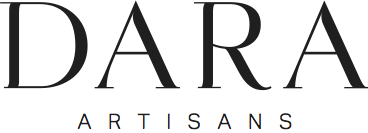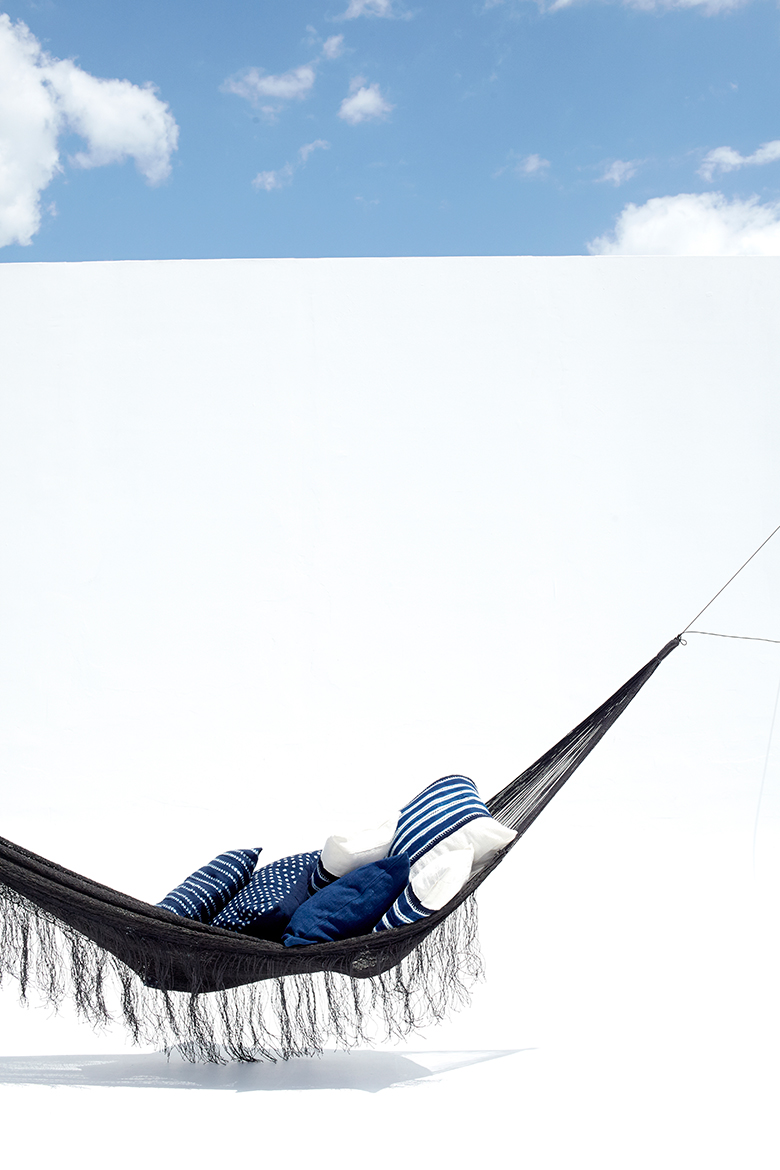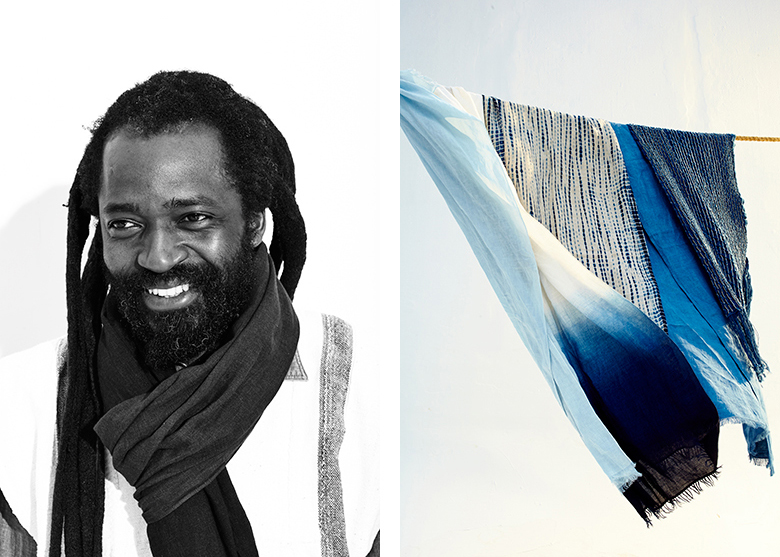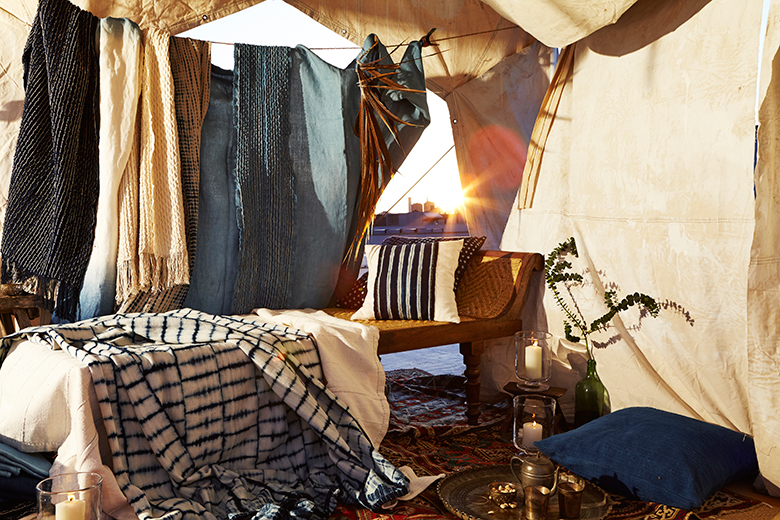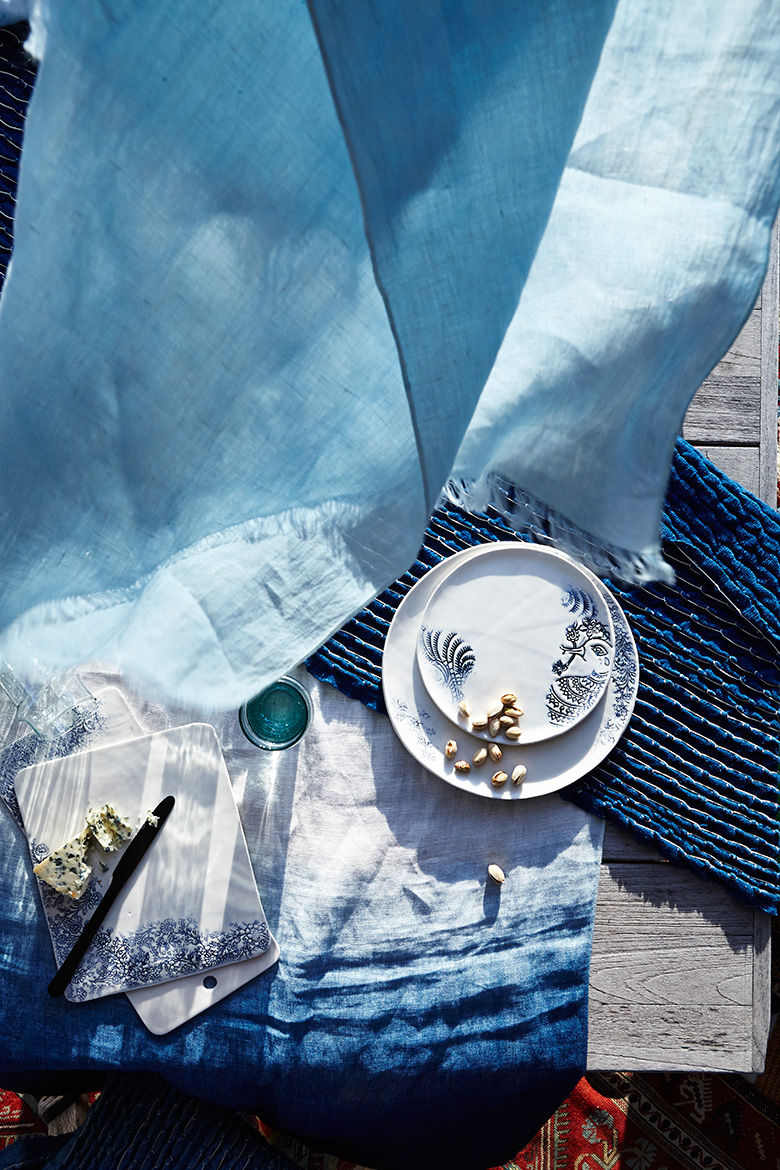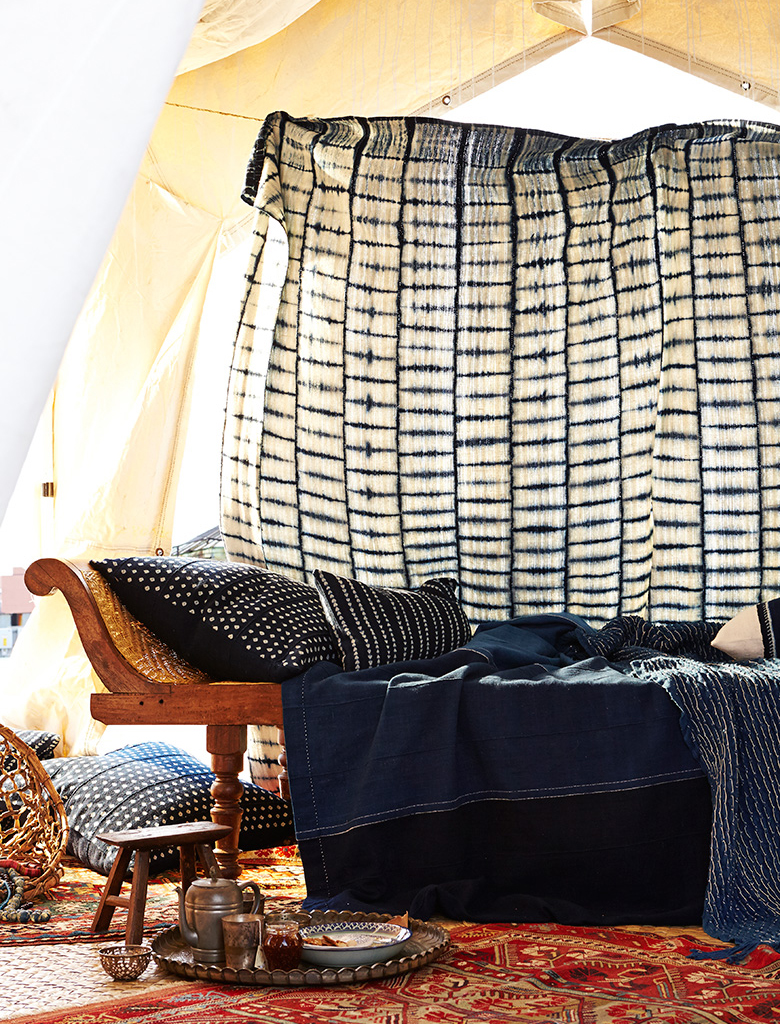Aboubakar Fofana : Blue Sky Dreaming
Aboubakar Fofana has found art in the ancient tradition of indigo dyeing.
Photographed by Gentl + Hyers
for DARA artisans
___________
Indigo surrounds us perhaps more than any other textile dye—it’s the blue of thousand-year-old religious rites and our modern jeans, once used as literal currency and in revolutionary symbols. (The blue in the first American flags was made from indigo.) Few modern craftsmen have unlocked its potential better than Aboubakar Fofana, who has studied traditional indigo production techniques for over three decades and on three continents: at home in Mali, inside ethnology museums in Paris, and alongside Masakazu Akiyama, a Japanese master dyer. Still, though, indigo remains a mystery that is only slowly unveiling its secrets: “Every time I work with indigo, it’s like the first time,” he says. “I never get bored.”
Fofana came to Paris at the age of 10. “I was the only male in my family, since we didn’t have a father at home, so my mother decided that my education should be provided by a man—my uncle, her brother,” he says. The transition was not an easy one. Though Fofana and his five sisters grew up in the urban environs of Bamako, Mali’s capital city, they were often dispatched to their paternal grandmother’s home during school vacations, to the “deep countryside” of neighboring Guinea. “We were trained by adults to recognize the different plants in the forest,” he says. “They would say, ‘This one is very good when you cut yourself’ or they’d tell us to gather a certain tree bark to make red dye.’ That was when I heard from the old ladies about indigo, how their green leaves make a blue dye. It was like a seed in my mind.” Expelled from his own, West African Eden, Fofana found Paris a “nightmare”: “I grew up in nature, and here everything is concrete. It was not easy.” Across the distance, Fofana often thought of indigo’s alchemy. He began his research into traditional dyeing techniques in Paris and set up his first vat of indigo dye when home in Mali, at 15.
“We were trained by adults to recognize
the different plants in the forest,” he says. “They would say,
‘This one is very good when you cut yourself’
or they’d tell us to gather a certain tree bark to make red dye.’
That was when I heard from the old ladies about indigo,
how their green leaves make a blue dye.
It was like a seed in my mind.”
________
Now, Fofana’s cultivation of indigo sounds more like winemaking than the commercial dyeing processes he rejected from the start. Fofana’s techniques are identical to those used 5000 years ago. The key element is the vat, where the fermentation process takes place. “The process itself is amazing,” Fofana says. A well-cared-for vat can survive many months. “It’s a living organism,” Fofana says. “You have to taste your vat; you smell it to know if the fermentation is too strong. Your eyes will see how thick the foam is.” That foam—also known as the “indigo flower”—signals the ripeness of the dye; vats are fed—bran porridge, honey, figs—to support the fermentation process. “You have to know every day how healthy your bacteria is,” Fofana says. “If they’re tired, you’ll kill them. It’s like making food, trying to find the right recipe. If you care for them—if you respect them and give them what they need, they will give you their beauty, these different blues.” The complexity of the process, Fofana says, ensures that his production potential will always be capped. “I cannot mass produce,” he says, though he has partnered on limited-edition projects with brands including Donna Karan’s Urban Zen and Edun, in addition to showing his work in galleries around the world.
This seems to suit Fofana just fine. It allows him, he says, to remain preoccupied with the process of dyeing as an art form—or even a sort of spiritual practice. He works in pursuit of a dozen tones of blues: “Of the blues with natural indigo, I can make 12 different blues, from very light to very dark—I discovered that traditionally, to be an indigo dyer, you have to master these 12 different shades,” he says. “Each has a different name and each has a specific emotion.” At one end of the spectrum is the lightest blue: “‘The blue that does not exist,’” he says. “Milky blue” and “the blue that is coming alive—healthy blue” are among the middle tones, while one of the darkest blues is “divine blue,” which he describes as “almost black” and says is traditionally used for wedding shawls for men—textiles that make use of yarn spun by his mother; he will be married in that shawl, and buried in it, as well. “We say this blue is a celestial color that will help him go to heaven.” Fofana declines to name a favorite blue (“It is like a father with his children—I love them all”), but there is a tone that remains special for its elusiveness. “Perhaps I’m looking for my specific blue, and I’m sure I’ll never find it,” he says. “Perhaps when I find it, it will be the end of everything.”
